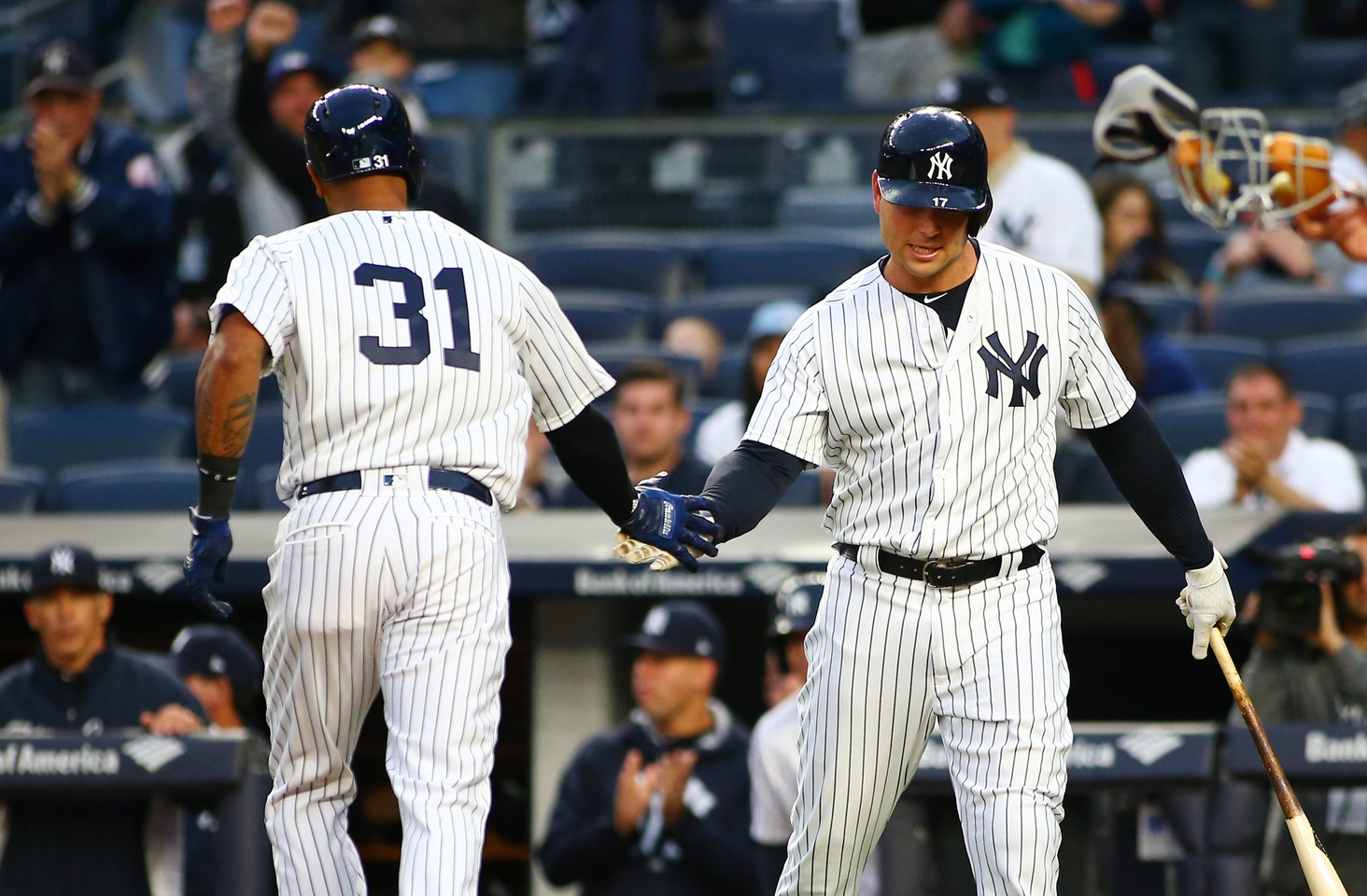[Edit: This article was originally written after the second game of the season. Since then, Gary Sanchez has gotten injured, and Joe Girardi has deployed more lineup variations. Still, this article is more about building the optimal lineup with everyone healthy rather than an analysis of today or tomorrow’s lineup in particular.]
Through the first two games of the season, Joe Girardi has stuck with the same lineup, and it appears that it will likely be his regular lineup going forward (at least against right-handed starting pitchers) until Didi Gregorius returns.
As far as lineup construction goes, lineup optimization matters far less than most fans like to think, but it can still make the difference between one or two wins over the course of an entire season. And although the 2017 Yankees are in a position where even the most optimal lineup may not earn them a spot in the playoffs, the converse is not true. If they do make the playoffs, it’s likely that every win will matter. So let’s have some fun with roster construction, starting with Girardi’s current iteration:
1) Brett Gardner
2) Gary Sanchez
3) Greg Bird
4) Matt Holliday
5) Jacoby Ellsbury
6) Starlin Castro
7) Chase Headley
8) Aaron Judge
9) Ronald Torreyes
This lineup is interesting in and of itself. Ellsbury batting fifth has already made some waves, while Sanchez batting second is also a bit intriguing. But let’s see how we can do building the ‘optimal lineup’.
For reference, here is a handy and easily digestible guide on the basics of optimal lineup construction via Beyond the Box Score.
1) Lineup optimization says that speed is important in the leadoff spot, but not nearly as important as on-base ability. If possible when deciding between two on-base machines for this spot, especially ones with similar speed and baserunning acumen, it’s better to prioritize the one with less power because leadoff home runs are more of a waste than with runners on.
Brett Gardner actually fits this description to a tee. On-base ability? Check. Speed and baserunning? Check. Minimal power? Check. Good job, Joe, you got this one right.
Chase Headley (.343 career OBP) and Matt Holliday (career .382 OBP) represent unorthodox but justified options here as well.
2) This represents the biggest gap among all the lineup positions between old-school and new-school. The classic old-school #2 hitter is good at the so-called “little things”, including sacrifice bunting, hitting grounders to the right side, and executing hit-and-runs — oh, and he’s probably a second baseman.
The data tells us that you want one of your two best hitters here, and if there’s a tie, prioritize on-base ability.
Now, Gary Sanchez wasn’t a bad choice here, and he certainly was the Yankees’ best hitter during his time in the majors last season. However, it isn’t guaranteed that he will be again this season, and even if you do believe that, Matt Holliday is probably the best choice here.
3) Modern data tells us that the #3 hitter is less important than the other slots in the top five, and it rewards hitters that hit home runs. I will explain the thought process later, but Aaron Judge is actually the correct selection here, especially if we go by the PECOTA projections (.235/.323/.434, 20 HR).
Depending on how optimistic you are on Starlin Castro (or pessimistic on Judge), Castro could be an arguable selection here.
4) Remember that the cleanup hitter should be one of the two best hitters in the lineup, particularly favoring power over on-base ability, and this is therefore a no-brainer — Gary Sanchez.
5) The #5 hitter should be the best hitter available after #1, #2, and #4 are filled. Greg Bird is the easy selection here, as his PECOTA-projected .270 TAv is comfortably better than any of the non-Gardner, Holliday, Sanchez candidates. I also tend to be rather bullish on Bird and expect him to exceed PECOTA’s projections.
6) The #6 spot belongs to, boringly, the 6th best hitter. Chase Headley belongs here, with his on-base skills giving him an edge over the other candidates.
7) The #7 hitter is generally the 7th best hitter, but this is where the debate gets rather interesting. Speed on the basepaths is optimized by placing it directly ahead of high-contact singles hitters, and the #8 spot should go to the worst hitter in the lineup if he happens to definitively be the worst. Ronald Torreyes fits both categories, making him the obvious #8 hitter. So that would make Jacoby Ellsbury the de facto #7 hitter, except that he projects slightly worse than Starlin Castro.
I’m going to make an executive decision as an author and put Ellsbury here because his track record as a hitter puts enough of an upside on his projection that he could conceivably outpace Castro this season.
8) As I mentioned above, Torreyes belongs here.
9) By process of elimination, Castro goes here, although 7-9 could’ve been either Castro/Torreyes/Ellsbury or Castro/Ellsbury/Torreyes as well.
Our final ‘optimal lineup’ should look something like this:
1) Brett Gardner
2) Matt Holliday
3) Aaron Judge
4) Gary Sanchez
5) Greg Bird
6) Chase Headley
7) Jacoby Ellsbury
8) Ronald Torreyes
9) Starlin Castro
Note: when Didi Gregorius returns, 7-9 becomes Castro/Gregorius/Ellsbury.
Despite our lineup only matching Girardi’s in exactly one spot in the order, both lineups look relatively similar. Anyways, keep a lookout for this lineup, because we’ll know if Joe Girardi read this article or not.
